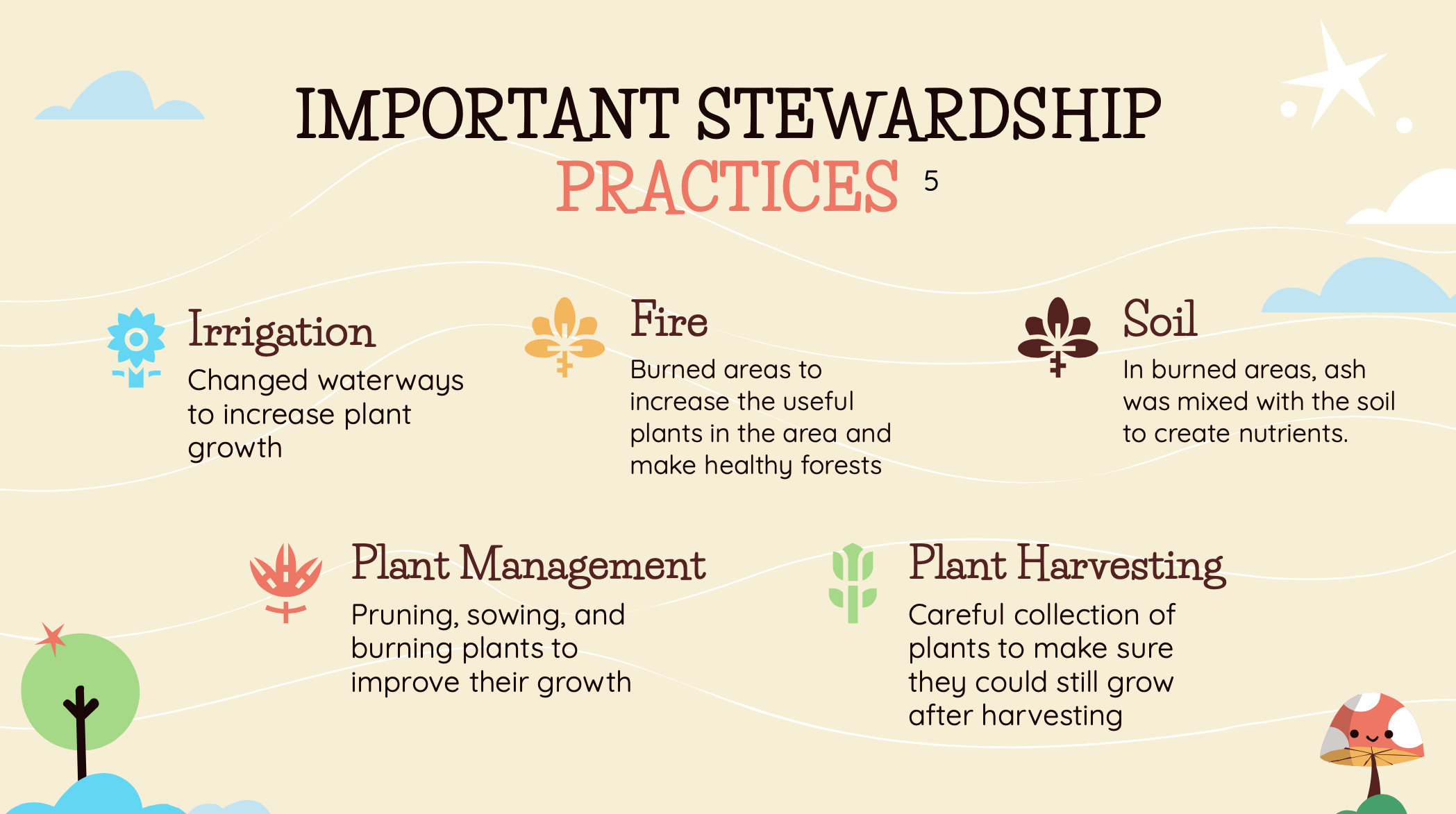Preparing Tomorrow’s Stewards: California Indian Land Management Practices
In this lesson plan for 4-5 classrooms, students will learn through an anti-racist, decolonial perspective about the history of California before settlement. This lesson particularly focuses on California Indian stewardship practices before settlement, highlighting the diverse range of methods California Indians used to take care of the land and people. Interactive activities throughout and a research project will assist students in developing key skills while learning about this important topic!
Lesson Plan 1/3 in the “Preparing Tomorrow’s Stewards” Series.
A note on terminology: this lesson plan will use the term, “California Indians” to refer to the first people of what is now called California. Although there is controversy over what to call this group, we will use this term because it what the author learned was preferred by the community. This is because saying “Native Californians” or “Indigenous Californians” can be confused to someone who was born and raised in California. California Indian is more clear and also reclaims the historical use of the term, “Indian.” It is suggested you discuss this distinction with your students.
At the end of this lesson, students should be able to:
Understand the perspectives of California Indians towards fire.
Identify California Indian land management practices and their effects on the environment pre-European contact.
Understand that California Indian culture, history, and practices are long-lasting, diverse, and nuanced.
The standards covered in this lesson are:
California state standards 4.1.5, 4.2.1, 5.1.1, and 5.1.2, 5.1.3
Common Core ELA Standards for Informational Texts 4.7, 5.7, 5.9 (Common Core Standards Initiative 2021) (California Department of Education 2000)
Slideshow Preview
Lesson plan created by Ariana Kretz




